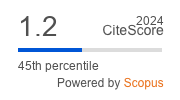Rheological study of injectable liquid implants
https://doi.org/10.33380/2305-2066-2025-14-4-2126
Abstract
Introduction. Hyaluronic acid (HA) is a polysaccharide belonging to glycosaminoglycans. Due to its high biocompatibility and ability to retain moisture, HA is widely used in cosmetology and medicine. The popularity of HA-based gels is growing, especially in injection cosmetology for the correction of age-related changes, making up a significant part of aesthetic procedures. As a result of the departure of foreign manufacturers from the Russian market, there is a need to develop domestic analogues. The study of the rheological properties of gels helps to optimize formulations for medical use, ensuring the effectiveness and safety of new products.
Aim. To study how the concentration of HA and excipients affect the rheological properties of gels. The study is also aimed at identifying the relationship between these properties and clinical effectiveness.
Materials and methods. Objects of study: fillers of the Stylage® line – Stylage® HydroMax, Stylage® L, Stylage® L lidocaine, Stylage® XL, Stylage® XL lidocaine, and Repаrt® Ġ line – Repart G Normal, Repart G Deep. The samples were examined by rotational viscometry.
Results and discussion. We established a relationship between the clinical characteristics of liquid implants and their rheological properties. In the course of the studies, we determined the following optimal ranges: mucoadhesion – from 100 to 200 Pa, plastic viscosity – from 0,2 to 1,0 Pa ∙ s at a shear rate of 0–100 s–1 at a temperature of 25 ± 1 °C, flow stress – from 50 to 150 Pa at a shear rate of 0–100 s–1 at a temperature of 25 ± 1 °C, thixotropy – complete.
Conclusion. As a result, the study showed that viscosity is important for injection and distribution of the drug in tissues. High mucoadhesion in gynecology and urology determines the fixation of the implant in the tissues. However, excessive mucoadhesion can cause the formation of subcutaneous agglomerates, which limits the use of such products on the face. The relationship between the flow stress and the quality characteristics of the implants was not established.
About the Authors
E. O. BakhrushinaRussian Federation
8/2, Trubetskaya str., Mosсow, 119991
A. I. Zarenkova
Russian Federation
8/2, Trubetskaya str., Mosсow, 119991
O. V. Kytko
Russian Federation
8/2, Trubetskaya str., Mosсow, 119991
E. I. Karpova
Russian Federation
1, Ostrovityanova str., Moscow, 117997
I. A. Myadelets
Russian Federation
Room 1N, 24A, Saint-Petersburg, Levashovsky prospekt, 197110
Yu. L. Vasiliev
Russian Federation
8/2, Trubetskaya str., Mosсow, 119991
References
1. Marinho A., Nunes C., Reis S. Hyaluronic Acid: A Key Ingredient in the Therapy of Inflammation. Biomolecules. 2021;11(10):1518. DOI: 10.3390/biom11101518.
2. Juncan A. M., Moisă D. G., Santini A., Morgovan C., Rus L.-L., Vonica-Țincu A. L., Loghin F. Advantages of Hyaluronic Acid and Its Combination with Other Bioactive Ingredients in Cosmeceuticals. Molecules. 2021;26(15):4429. DOI: 10.3390/molecules26154429.
3. Fraser J. R. E., Laurent T. C., Laurent U. B. G. Hyaluronan: its nature, distribution, functions and turnover. Journal of Internal Medicine. 1997;242(1):27–33. DOI: 10.1046/j.1365-2796.1997.00170.x.
4. Fundarò S. P., Salti G., Hernandez Malgapo D. M., Innocenti S. The Rheology and Physicochemical Characteristics of Hyaluronic Acid Fillers: Their Clinical Implications. International Journal of Molecular Sciences. 2022;23(18):10518. DOI: 10.3390/ijms231810518.
5. Zagorulko Y.Y., Zagorulko E.Y. Features of Hyaluronic Acid Solutions for Intra-articular Introduction and Recent Trends in Their Development (Review). Drug development & registration. 2020;9(2):45–54. (In Russ.) DOI: 10.33380/2305-2066-2020-9-2-45-54.
6. Iaconisi G. N., Lunetti P., Gallo N., Cappello A. R., Fiermonte G., Dolce V., Capobianco L. Hyaluronic Acid: A Powerful Biomolecule with Wide-Ranging Applications—A Comprehensive Review. International Journal of Molecular Sciences. 2023;24(12):10296. DOI: 10.3390/ijms241210296.
7. Ikonnikova E. V., Manturova N. E., Kruglova L. S. Types of fillers and their characteristics (part 1). Plastic surgery and aesthetic medicine. 2023;(1):67–76. (In Russ.). DOI: 10.17116/plast.hirurgia202301167.
8. Bakhrushina E. O., Kondratyeva V. M., Khodenok A. I., Demina N. B., Krasnyuk I. I. Study of the adhesive characteristics of mucoadhesive polymer systems by rotational viscometry. Pharmaceutical Chemistry Journal. 2023;57(3):35–44. (In Russ.) DOI: 10.30906/0023-1134-2023-57-3-35-44.
9. Anurova M. N., Bakhrushina E. O., Barnolitskiy G. G., Krechetov S. P. Justification of the rheological optimum in the development of semisolid forms. Dental gels. Drug development & registration. 2017;(2):124–128. (In Russ.)
10. Bakhrushina E. O., Anurova M. N., Zavalny M. S., Demina N. B., Bardakov A. I., Krasnyuk I. I. Dermatologic gels spreadability measuring methods comparative study. International Journal of Applied Pharmaceutics. 2022;14(1):164–168. DOI: 10.22159/ijap.2022v14i1.41267.
11. Salti G., Fundarò S. P. Evaluation of the Rheologic and Physicochemical Properties of a Novel Hyaluronic Acid Filler Range with eXcellent Three-Dimensional Reticulation (XTR™) Technology. Polymers. 2020;12(8):1644. DOI: 10.3390/polym12081644.
12. Gordeeva D. S., Khutoryanskiy V. V., Moustafine R. I. Development and study of mucoadhesive microcapsules for the nasal levodopa delivery. Drug development & registration. 2024;13(4):129–138. (In Russ.) DOI: 10.33380/2305-2066-2024-13-4-1918.
Supplementary files
|
|
1. Графический абстракт | |
| Subject | ||
| Type | Other | |
View
(1MB)
|
Indexing metadata ▾ | |
Review
For citations:
Bakhrushina E.O., Zarenkova A.I., Kytko O.V., Karpova E.I., Myadelets I.A., Vasiliev Yu.L. Rheological study of injectable liquid implants. Drug development & registration. (In Russ.) https://doi.org/10.33380/2305-2066-2025-14-4-2126










































